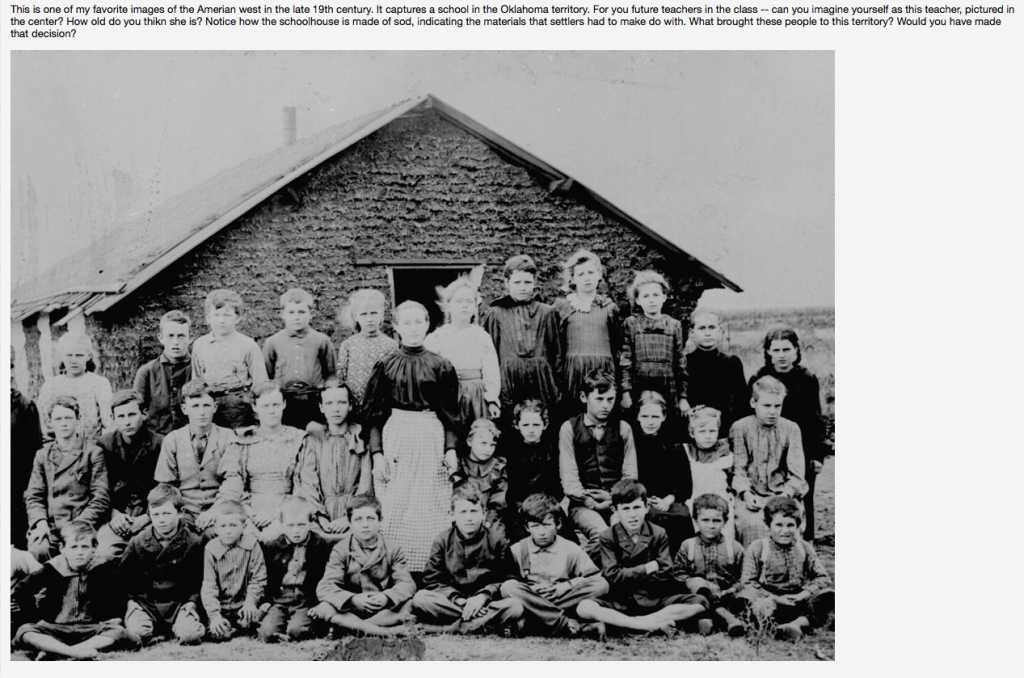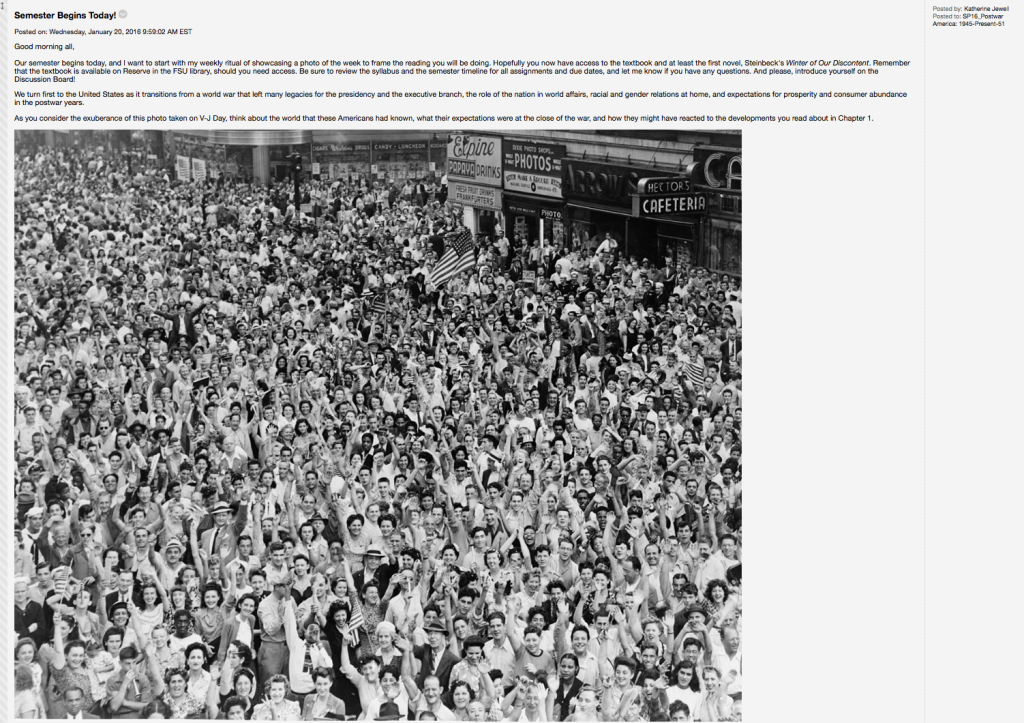This semester I’m teaching two out of my three courses online because I’m expecting a baby in April. While I’ve taught online regularly for the last five years, teaching two courses at once has led me to streamline and simplify what I’ve been doing.
For me, recording online videos has been a bit of a hit-or-miss operation, and given the potential disruptions in my schedule with the pregnancy, I opted not to do weekly videos as I have in the past. I have also had issues with the videos not being watched — often times the incentive is lacking for students to view these posts, and it’s disheartening to see them only get six hits out of a class of twenty-five. (Creating incentives is a post for another day…)
So for both of my courses, I have begun a new practice: weekly image reflections. Instead of recording a lecture or doing a quick reflection, I post an evocative image that captures the theme developed in that week’s readings. It supports the learning outcome of the course of engaging students in primary sources, and the images sets the tone for them as they read that week’s textbook chapter and reflect on the thematic developments. Each week also features an online discussion, and the image connects to that topic as well, providing another “in” to the content.
There are a few advantages to this approach. Unlike the videos, the images are hard to ignore. When a student signs into the course, it is the first thing presented — once seen, it’s hard to un-see it. Images are also familiar means of engagement for students. I try to pick images with lots of detail, or that are particularly evocative or engaging in some way, creating a kind of Instagram feed of the past–a familiar means of seeing the world for students, yet a method that introduces them to very different places and times.
In this image, for my US survey students, I selected an image that many of them might be able to relate to, since many are future elementary school teachers. The discussion for the unit focuses on the different regions of the United States in the late 19th century, and this schoolhouse in Oklahoma from the NARA collection of photographs of the American West provides a glimpse into the past–very challenging!–lives of teachers, in addition to life in the American Southwest during settlement.



